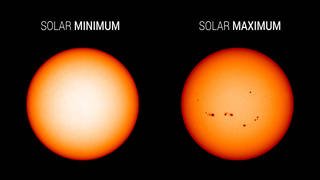[WATCH] Sun Entering Solar Cycle 25 From Last Minimum

The National Aeronautics and Space Administration (NASA) has announced that Sun has entered a new solar cycle officially referred to as ‘Solar Cycle 25’.
The Sun’s solar cycle is an 11-year cycle when the Sun’s magnetic poles flip and the star transitions from an active to a quiet phase. It is during these phases that its effects are experienced across the solar system.
Although we might not see much difference on Earth, changes in the solar cycle can damage satellites, cut off communication signals, and also pose threat to astronauts exposed to higher than normal levels of radiation.
While the Sun’s activity isn’t always catastrophic, the energy it releases creates beautiful auroras and bright light seen in the night sky on Earth.
What does a new solar cycle mean?
The next solar maximum, when the Sun is experiencing peak activity, is predicted to occur in July 2025. NASA says the solar minimum that marked the end of the last cycle actually happened in December 2019.

Due to the Sun’s unpredictable nature, knowing when one cycle has ended and another has begun can take several months.
As the Sun heads into its new cycle, it could lead to dramatic events on the surface – giant explosions such as solar flares or coronal mass ejections that can spew light, energy and solar material into space.
“Space weather is what it is – our job is to prepare. There is no bad weather, just bad preparation,” Jake Bleacher from NASA was quoted as saying by BBC.
Watch The Solar Cycle From Space:
If Solar Cycle 25 meets the predictions, it should be weaker than average. Cycle 25 is also expected to end a longer trend over the past four decades, in which the magnetic field at the Sun’s poles were gradually weakening. As a result, the solar cycles have been steadily getting weaker too.
If Solar Cycle 25 sees an end to this waning, it would quell speculations that the Sun might enter a grand solar minimum, a decades-to-centuries long stretch of little solar activity. The last such minimum known as the Maunder Minimum occurred in the middle of what’s known as the Little Ice Age from the 13th to 19th centuries, causing erroneous beliefs that another grand minimum could lead to global cooling.

Comments are closed.